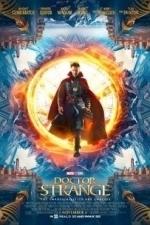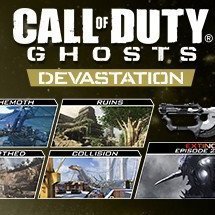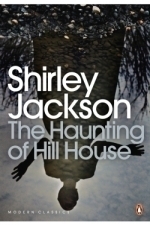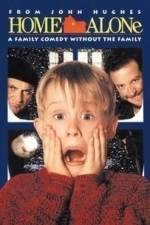okletmereviewit (4 KP) rated Doctor Strange (2016) in Movies
May 11, 2018
If you don't know the story of Doctor Strange, well let me fill you in. Dr. Steven Strange was a brilliant neurosurgeon, and an egotist. In the movie, we find Doctor Strange (played by Benedict Cumberbatch) washing up to perform brain surgery. His prideful, ways have him showboating the surgery by not waiting for any imaging equipment and dislodging a bullet from the brain of a person who was thought to be dead.
After he has preformed a miracle surgery, he is rushing through traffic to go to a gala, when he hits another car, and crashes. In the process of crashing he crushes his hands, the very tools to which he was made famous for. After countless surgeries and experimental procedures he is left in destitute.
He then begins to wander the city and comes across a man who had sever spinal cord injury and was supposed to never walk again, but was and playing basketball, who tells him of a spiritual retreat that he went on in order to heal himself. Using what money he has left Dr. Strange flies to Kathmandu to search out this mystical temple and its healer.
He wanders the streets of Kathmandu, looking for any signs of where this holy temple may be. Getting desperate, and weary of looking. He makes a fated turn down a back alley street, where he is assaulted by a group of Pick Pockets, who target him as easy prey. They are quickly dispatched as Mordo (played by Chiwetel Ejiofor) beats them down, thus saving Strange from certain death by the hands of petty thugs.
Mordo takes Dr. Strange to the temple, explaining that The Ancient One (played by Tilda Swinton) may be able to help him, but that he would have to be very humble in asking for help. Dr. Strange with his medical, and scientific knowledge, begins to dismiss the teachings and workings of The Ancient One, as no more than metaphysical BS. The Ancient One then sends Dr. Strange on a quick out of body journey throughout the multiverse the whole time narrating the journey with deep wisdom. And then quickly after he is brought back from this journey he is banished to the streets and the doors locked behind him. Begging and pleading for hours, Mordo convinces The Ancient One to accept him for training.
Through what can be assumed as months of training, Dr. Steven Strange begins learning the mystical arts and excelling at a phenomenal rate. While studying he discovers The Eye of Agamotto. A powerful talisman capable of augmenting time and space. He then uses it to reveal the missing pages of a manuscript, and discovers that The Ancient One has been harnessing energies from a dark dimension to prolong her life, and a realm of a dimensional being known as Dormammu. Dormammu wants nothing else than to absorb the Earth into his being and make it part of the dark dimension. Doctor Strange then learns that Dormammu's henchmen are devising a plot to overtake 3 power houses throughout the world, in order to allow his reign of power to be complete.
Doctor Strange then must battle Kaecilius (played by Mads Mikkelsen) a former student of The Ancient One, and top disciple of Dormammu, for control of the Sanctum's (three mystical power houses that create a magical shield that protects the earth). This is the point in the movie where Steven begins to really take point and understand the extent of the power that he has learned. An epic magical battle of the wills ensues where Dr. Strange, Mordo, and Kaecillius, all take the the streets of New York in 'Mirror Dimension' where Kaecillius bends space and time to create an augmented reality (if you have seen Inception this is where they flip the world upside down and sideways and things get really visually intense), The battle of wills continues until finally The Ancient One joins the fight and battles her former pupil in a no holds battle. She is then critically injured and all of reality returns to normal. As she lays dying in a hospital room, she and Strange exchange an emotional yet sagely goodbye on the Astral Plane.
Doctor Strange returns to the New York Sanctum only to find that it had been destroyed. He and Mordo go to Hong Kong, the where they discover that the last Sanctum has fallen and that Dormammu is in the process of over taking the Earth with help from his lackey Kaecillius. Acting on instinct and whim, Doctor Strange uses The Eye of Agamotto to turn back time and restore the city and Sanctum back to its original form, when Kaecillius breaks the spell and concentration of Doctor Strange. DS then flies into the heart of the dark dimension bringing along with him The Eye of Agamotto, where he then traps Dormammu and himself in an endless time loop. Driving Dormammu mad realizing that he is trapped inside of time and no longer existing outside of time. Strange strikes a bargain that Dormammu will retreat from the Earth and take with him all of his followers never to return again, to which a defeated and angry Dormammu agrees and calls back his forces. The movie ends with Doctor Strange taking up the mantel of Sorcerer Supreme.

GoodReader - PDF Reader, Annotator and File Manager
Productivity and Business
App
The amazing 4th edition of GoodReader® app is a universal app for all your iOS devices. This...
Gareth von Kallenbach (980 KP) rated Call of Duty: Ghosts - Devastation in Video Games
Jun 19, 2019
The following maps are included in the collection.
Behemoth
This is set in a large excavation tool in Columbia where stairs, narrow corridors, and fast action are the order of business. Think of a cross between an oil rig and excavation machine and you have an idea what’s in store.
The upper levels of the map provide plenty of fast action and the interior locales get plenty of opportunity for close quarter combat. Running on the main deck may make you a favorite of snipers, but there are plenty of opportunities for players to duck out of harms way if they’re willing to jump over a ledge.
I have to say that this is my favorite of the new maps because I just really enjoyed the run and gun style of playing and this one suits me perfectly.
COD Ghosts Devastation_Behemoth Environment
Ruins
Set in Mexico, this map combines a jungle locale with plenty of temples. At first it was very frustrating as due to the excessive amounts of foliage and varying terrain levels, it was a campers paradise. I lost count of how many times I was spawn camped at the beginning of my play sessions but I soon developed instincts as to where opponents preferred to set up and hide. There is plenty of opportunity for fast and intense combat here as long as you’re willing to put up with the numerous snipers and campers that will letter the map.
When a player reaches a certain level of kill streak, they will become The Predator from the film series and this allows them to hunt opposing players using the heat vision of character as well as his wrist blades and plasma cannon. Should a player be lucky enough to take down this creature, he often gets the final laugh courtesy of his self-destruct mechanism which complete with sound effects from the film has devastating results.
COD Ghosts Devastation_Predator vs the Volcano
Unearthed
Set in a classified location this is often the most frustrating of the new maps for me. It is like a combination of Dome and a couple of other maps from previous games which forces combat to flow along and excavation site. There are some impressive things such as automatic doors and underground areas to fight within. However the central hub and elevated catwalk also lead to lots of sniping and camping. I had been spawn camped on this map more than any of the other maps combined but if you’re willing to lob a few grenades into the central hub, you can often be rewarded with some very impressive kill streaks.
COD Ghosts Devastation_Unearthed Environment
Collision
This New York based map is cluttered and dangerous as it is set aboard a crashed freighter that is mingled with the bridge and has all manner of vehicles and cargo containers aboard. Sniping is common here but the multilevel map and numerous interiors allow for a nice mix of gameplay styles. I remember recent session where I completed the final kills for our team by jumping down upon three passing enemies firing as I jumped. I have also racked up some very enjoyable kill streaks on this map that resulted in rocket strikes being called in. The detail level is good from the standing water in the lower sections of the ship to the cargo netting and containers that letter the upper levels. Seeing the wrecked New York City taxis was a nice touch as well as some of the more personal details in the crew quarter areas of the ship.
COD Ghosts Devastation_Collision Environment
The new weapon is called the Ripper and I found it to be a very interesting mix of submachine gun an assault rifle as it escaped will changing between the two on-the-fly. It is very high rates of fire which will rip opponent to shreds in short order hence how the weapon got its name. The high rate of fire though does go through your ammunition quickly so short bursts or plenty of time to reload is always recommend.
The final part of the collection is the Mayday episode of the alien themed Extinction. For players work with one another to infiltrate and clear a locale that is been overrun by the alien menace. Players purchase weapons upgrades based on the amount of enemies they dispatch and will also earn skill points based on their performance. Said skill points will let them do things such is offer ammunition upgrades to teammates and bring in electronics ranging from Sentry guns and other advanced weaponry. My first time through we made excellent progress as we seem to be well synced to take out the aliens and guard our drill that was required for advancement into the game.
This was short-lived as after several successful encounters we came across a group that had our number and dispatch us in quick succession which left no one to revive the fallen members. While it is a bit frustrating batch when this happens you must replay the entire session over the graphics and gameplay are definitely a very nice touch and I’m very happy to see that they have moved this to an episodic format because the narrative and back story bring a whole new level of enjoyment.
While not perfect, the collection is to me more enjoyable than many that maps the game shipped with at launch and therefore one that I can easily recommend. Those looking for the best value will want to purchase a season pass is that will get you all for the map packs at the discounted price which is certainly a is better than paying the going rate to get them à la carte.
http://sknr.net/2014/05/20/call-duty-ghosts-devastation-dlc/

TapGlance Interior Design
Lifestyle and Productivity
App
TapGlance is a powerful and intuitive interior design app. Within minutes and without any prior...
Hadley (567 KP) rated The Haunting of Hill House in Books
Apr 19, 2019
The story is still worth reading because Jackson's story telling is something that is missing in literature today. The reader is introduced to characters that are different enough to be interesting; their development is just right that it leaves the reader satisfied. The story moves along well enough that the pace keeps us from getting bored. And each turn of the page keeps the reader guessing what is going to happen next- a must for any ghost story.
In 'The Haunting of Hill House,' Jackson mostly focuses on the character Eleanor - a woman who recently lost the sickly mother she had taken care of for years, to receiving an invitation for a paranormal experiment at the infamous Hill House. Eleanor also seems to be the main character affected by the house, not only having her name written on a wall, but also having her named called out by spirits during an automatic writing session with them.
Our first introduction to the Hill House happens as Eleanor arrives: "No Human eye can isolate the unhappy coincidence of line and place which suggests evil in the face of a house, and yet somehow a maniac juxtaposition, a badly turned angle, some chance meeting of roof and sky, turned Hill House into a place of despair, more frightening because the face of Hill House seemed awake, with a watchfulness from the blank windows and a touch of glee in the eyebrow of a cornice. Almost any house, caught unexpectedly or at an odd angle, can turn a deeply humorous look on a watching person; even a mischievous little chimney, or a dormer like a dimple, can catch up a beholder with a sense of fellowship; but a house arrogant and hating, never off guard, can only be evil. This house, which seemed somehow to have formed itself, flying together into its own powerful pattern under the hands of its builders, fitting itself into its own construction of lines and angles, reared its great head back against the sky without concession to humanity. It was a house without kindness, never meant to be lived in , not a fit place for people or for love or for hope. Exorcism cannot alter the countenance of a house; Hill House would stay as it was until it was destroyed."
We never see Hill House through any other character's eyes, and the viewpoints mostly come from Eleanor (a missed opportunity,I think). Everyone who arrives at the house feels uneasy about it: doors and curtains close on their own, unexplained banging noises down the hallways(only at night), the chattering and laughter of children, and with an oddly placed cold spot. Yet,to the reader's dismay, nothing is fully explained by the end of the story - no apparitions show up, no one seems harmed by anything unseen (although, the character, Luke, suddenly shows up with a bruised face that is never discussed), and the reader ends up wondering if this really is a product of mass psychosis. It almost seems like Jackson ended the story abruptly just to finish it(the book is only a little under 200 pages). She set up wonderful scenarios, but without explanations, we're left with a very empty feeling.
Nearing the end of the book, the doctor, John Montague, who has ran the entire experiment, has his wife,Mrs. Montague,arrive a few days later, who seems to know more about contacting spirits than he does: "The library? I think it might do; books are frequently very good carriers, you know. Materializations are often best produced in rooms where there are books. I cannot think of any time when materialization was in any way hampered by the presence of books." And with the arrival of Dr. Montague's wife, we get one of the major experiences in the entire book. Although her character is quite annoying- even seen through the eyes of other characters- she brings some of the most ghost story elements, one of which is her automatic writing sessions: "Planchette felt very strongly about a nun, John. Perhaps something of the sort- a dark, vague figure, even- has been seen in the neighborhood? Villagers terrified when staggering home late at night?" None of the characters, besides Mrs. Montague's companion, Arthur, believe her automatic writing sessions are real, even after Eleanor's name is brought up during one. As I stated before, without any explanations, the reader is even led to believe that nothing was meant to come of these sessions whatsoever.
The ghost story elements may not have been strong in the story, but the characters make up for them. They constantly question what they are experiencing and/or seeing, they question their surroundings, and they question each other -Jackson does an amazing job weaving paranoia into the story line.
One of the more shocking and unbelievable scenes is when Eleanor is suddenly not fearful of the house anymore: "And here I am, she thought. Here I am inside. It was not cold at all, but deliciously, fondly warm. It was light enough for her to see the iron stairway curving around and around up to the tower, and the little door at the top. Under her feet the stone floor moved caressingly, rubbing itself against the soles of her feet, and all around the soft air touched her, stirring her hair, drifting against her fingers, coming in a light breath across her mouth, and she danced in circles. No stone lions for me, she thought, no oleanders; I have broken the spell of Hill House and somehow come inside. I am home, she thought, and stopped in wonder at the thought. I am home, I am home, she thought; now to climb." It was as if Eleanor was a completely different person in just a few pages.
I do have a couple of problems with 'The Haunting of Hill House,' mostly centering around the use of run-on sentences and extra long paragraphs. The run-on sentences are a waste of time because Jackson seems to merely elaborate on something that could be easily explained or experienced with fewer words. The paragraphs, however, need to be broken up for scene transitioning purposes -when she transitions from one scene to the next, she can confuse the reader with them: one paragraph will have all the characters in the dining area, but in that same paragraph, just a few sentences down, Jackson has the characters suddenly in the parlor,drinking Brandy. Maybe the intention was to make the reader feel paranoid and uneasy like the characters in the book, but it was certainly not needed with the way of Jackson's style of writing.
With all that said, it's easy to see why this book is a popular classic. The writing is strong, using enough descriptions to put the reader in Hill House with all of its paranormal beings. And no matter who you are, you are able to find at least one of the lead characters as a favorite. I feel the book is a must-read for anyone interested in the paranormal, because Jackson brings out the occult interest that was going on around 1959 - when she published 'The Haunting of Hill House;' everything from cold spots to the use of a planchette for automatic writing.
I recommend this book, but if you're looking for scares, you must look elsewhere.

Houseplan Pro
Business and Lifestyle
App
*No Ads *Full furniture pack *iCloud backup *Print out your designs *Color Supported House plan...
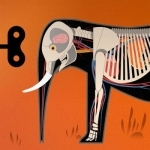
Mammals by Tinybop
Education and Games
App
For all kids who love animals! Mammals lets kids explore the awesome and invisible wonders of the...
Emma @ The Movies (1786 KP) rated Home Alone (1990) in Movies
Sep 25, 2019
On December 7th Home Alone turned 28 in the UK. 1990... just wow. I'm feeling old enough without films I grew up with being called classics.
If you haven't considered your own Home Alone plan... well, what have you been doing with your life?! As a tip, if you already have a zombie apocalypse plan in place then it's very easily adapted, you just need a little less lethal force. And it's probably best for me to remind you not to actually try this at home, because I'm not convinced that Harry and Marv would have survived. (And if we take the results from Better Watch Out then you're probably looking at some kind of murder charge.)
In December they were showing Home Alone a few times at Cineworld so it would have been rude not to go at least once to see it. I'm really getting into the classic releases on the big screen, it's so much fun. The show I picked was basically populated by adults, just two children brought along by their parents. We were all roaring with laughter, the comedy never gets old.
The music of Home Alone is instantly recognisable and yet I always forget that it's one of John Williams' epic creations. You can't hear it without thinking of the specific scene in the film it relates to, and it's certainly influences a lot of films since. Something that again I hadn't really noticed until I watched the Christmas horror film, Secret Santa (review coming soon).
It always fills me with questions though... Do all Americans have telephones with cords that are about 20 feet long? How did Buzz manage to shove that entire pizza slice in his mouth? Why did Leslie ever marry Frank? Why is Jimmy in the shop so over enthusiastic? How does Kevin manage to create all his traps in such a short amount of time? And who on Earth leaves their house that tidy when they're leaving for holiday? Especially when you consider they left in such a hurry!
The idea is such a fun one, I can see why it's so popular all this time later. Watching it more and more though you do realise that Culkin's acting was pretty bad, but that just adds to its charm.
Watching it with a group of people who already love the film really made it a better viewing. We all laughed at the amazing prat falls from Joe Pesci on the ice and the walls of the cinema caved in slightly as we all took a sharp intake of breath as Marv stood on that nail. It's genuinely more fun to roar with laughter with other fans.
It's sad to think that Home Alone could never happen these days. (Although Google did bring us an advert that gave us a peak at what might happen. I've put the video at the end of the post.) Kevin probably has several smart devices that they could contact or track, the house would also likely be equipped with state of the art surveillance and alarm systems that would have alerted someone to movement and doors opening. On the flip side though it's quite fun to think about what sort of traps Kevin could be creating with the wonders of modern technology. I'd say lets get a petition going to see that happen but while Home Alone 4 was passable I don't think we really need any more of them.
What you should do
This should be in everyone's Christmas film rotation. If you don't watch it at least once a year... well... *shakes head*.
Movie thing you wish you could take home
Everyone needs those quick inventing skills, but I'm actually going to go with Kevin's other superpower... his amazing ability to make epic ice cream sundaes.
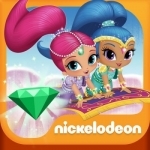
Shimmer and Shine: Enchanted Carpet Ride Game HD
Education and Games
App
Preschoolers learn basic math concepts on an enchanted carpet ride with Nick Jr.’s mega-popular...
